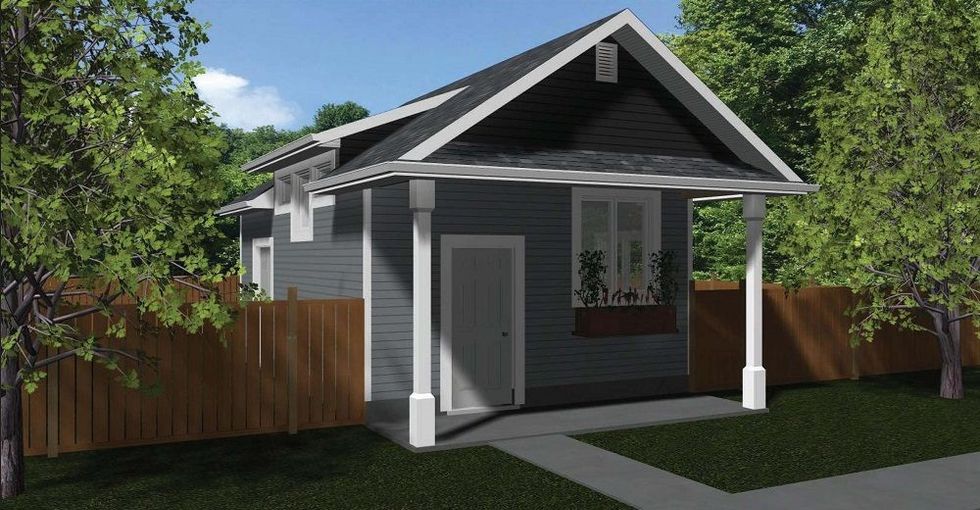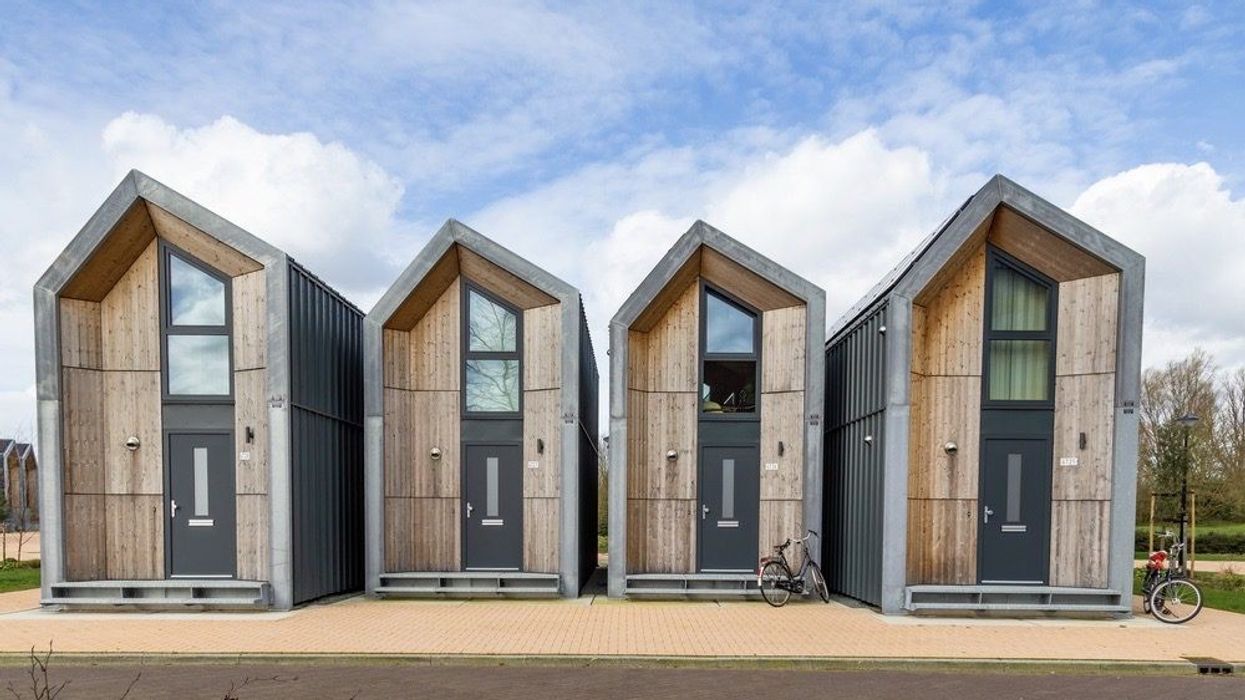Tiny homes are touted as a way to create affordable housing alternatives, but in the Greater Toronto Area where land costs are exorbitant and such an innovation is consequently stymied, the solution becomes economies of scale.
“In the east end of Toronto, there are some infill-style tiny homes that aren’t individual units but styled like townhouses, and they are quite small and pre-fabricated. It’s an interesting solution,” said Mike Singleton, Executive Director of Sustainable Buildings Canada. “It’s something that should be looked at in urban settings where there’s limited space and there’s a desire to densify as much as possible but still have a great urban form, which is what this development achieved.”
Topping out at around 600 sq. ft, tiny homes are no larger than bachelor and one-bed condominium units but, because a GTA land plot is so expensive, the savings are negligible. However, building several tiny townhouses, as Singleton referred to them, justifies the land price while keeping the dwellings’ costs low by using fewer materials and ensuring a smaller footprint.
In St. Thomas, Doug Tarry Homes is developing Project Tiny Hope, which will have about 25 tiny homes and an apartment building with another 25 or so smaller units. The project is being developed in tandem with the local YWCA and will charge below-market rents to tenants for whom housing is precarious.

Using the example of a drywaller, Stefanie Coleman, Chief Sustainability Officer with Doug Tarry Homes, says a single tiny home isn’t always economical because a certain price per square foot is charged, and because drywalling requires several trips, there could be no cost savings. Moreover, even though a tiny home’s bathroom might be smaller, the price of a faucet, fixture, bathtub, and shower won’t be any less.
“One of the things we’re working on right now is, because tiny homes can be quite expensive -- and in our particular situation they’re designed as actual low-income affordable housing, so the challenge is compounded versus a regular home -- is what I call ‘tiny towns,’” Coleman said of tiny townhouses. “If you have an option that can suit that, it’s a great alternative.
“Overall, if the project is larger than one single small unit, when the plumber is there he can hit all, say, four units, and when the electrician is there, she can hit all four units, so some efficiencies are built in.”
Coleman says tiny homes cost $350-450 per sq. ft to construct, but considering a downtown Toronto condominium, which is of comparable size, is priced at over $1,200 per sq. ft, the cost savings are there -- provided the land is optimized to recoup costs.
Moreover, built a couple of storeys off the ground, two or three bedrooms can be fit into a tiny home, which makes it the perfect missing middle housing.
“The feedback I’ve heard is, when you compare it to the alternative, which would be a condo, this can be a really affordable alternative for people,” Coleman said. “But when you look at rural towns, those types of price points can be really high and may not make a lot of sense.”
Tiny Homes Are Ideal in Laneways
Singleton says that, in Toronto, tiny homes work perfectly in laneways because there aren’t additional land costs, making a stronger case for constructing single tiny homes. He also noted that laneway housing is a great way to achieve densification targets that are mandated by the provincial Places to Grow Act of 2005, and while tiny homes weren’t mentioned among dense housing typologies 17 years ago, they’re ideal missing middle abodes.
Although expensive land costs can quash the case for tiny homes in some places, Singleton notes that there’s always a case to be made for a home that has a smaller footprint because the energy and water bills will be lower.
READ: Toronto Gives Garden Suites the Green Light
“You have a homeowner who owns the land already and they can add a second dwelling on the land without having to pay land costs, and they can rent out the second dwelling to somebody who needs it,” he said.
“It’s a solution for people who are downsizing and don’t want to live in condos for one reason or another. It’s an alternative to the condominium, perhaps. That’s the sweet spot for tiny homes, and particularly once you get away from those volcanic prices that we have in Toronto, it becomes a really interesting potential solution.”
Tiny Homes’ Small Footprints are Sustainable
Tiny homes use smaller square footage, therefore, even if their roofs are fitted with photovoltaic panels, they won’t produce enough energy. But that doesn’t mean exploratory methods aren’t underway.
Singleton says tiny homes, due to their smaller footprints, also lower the embodied carbon -- the amount of energy in carbon that goes into creating a structure -- during construction.
“Those are the ‘importance of sustainability’ features. Some of the ones being contemplated right now are striving to be net-zero energy or net-zero carbon, but there’s this idea of generating enough energy on-site to offset what you use,” he said. “It’s difficult to generate enough electricity because the roofs aren’t that big, but it’s the target or aspiration, if you will."
Lead Photo: An example of eco-friendly tiny houses in NIjkerk, Netherlands, with just 39 sq meters of living space.





















